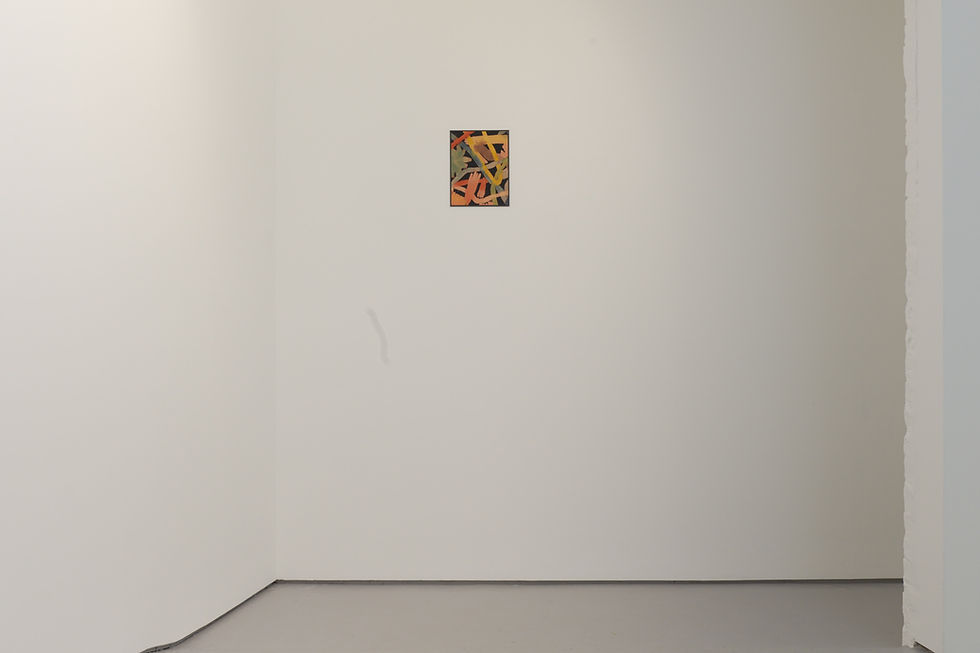
Exhibition view Josh Lilley, London 2019don 2019

Exhibition view Josh Lilley, London 2019

Exhibition view Josh Lilley, London 2019

Bleached and dyed cotton fabric 227 x 155 cm 2019

Bleached and dyed cotton fabric 28 x 21´5 cm 2018

Diptych. Bleached cotton fabric 28 x 21´5 cm 2019

Exhibition view Josh Lilley, London 2019

Exhibition view Josh Lilley, London 2019

Bleached and dyed cotton fabric 227 x 155 cm 2019

General view Josh Lilley, London 2019
I turn Chilli Red
Belén Rodriguez, I Turn Chilli Red
Josh Lilley Gallery, London
I Turn Chilli Red, the title chosen by Belén Rodríguez (Valladolid, Spain) for her third solo show at the Josh Lilley Gallery, is an expression taken from a poem written in the early 16th century by an anonymous Aztec dyer and recorded by the Franciscan friar Bernardino de Sahagún in his General History of the Things of New Spain, better known as the Florentine Codex. It is a fitting title, as over the last three years Belén’s pictorial work has focused on the processes involved in dyeing and discolouring fabrics of different sizes and spatial arrangements. In the works featured in this exhibition, whether mounted on stretchers or hanging loosely, paint is no longer a layer applied on top of the canvas but a molecular process that penetrates and seeps into the cloth, becoming one with it. Rather than pictorial matter, the texture and tactile quality of paint, these pieces are dominated by liquid logic and dynamics. The liquid pigment flows over the fabric’s surface in great saturated masses—somewhere between uncertainty and control, between chance and necessity—in both the additive process of dyeing and the abrasive process of discolouration, and the paint runs towards the edges in a surge of aqueous hedonism. It is a process of painting by addition, but also by subtraction, friction, erosion and eroticism. The allusion to precolonial Aztec culture is also closely related to the work the artist began in 2018 during a stay in Colombia, where the Caribbean setting brought out the most sensual side—fruity and floral, ornamental and warm—of her work.
The exhibition includes works of monumental size, occasionally made by stitching different fabrics together, as well as a number of smaller pieces. Some contain recognisable figurative references, while in others the real seems to have dissolved into abstract patterns. But in every variation, we see the effectiveness of her fluid mechanism as it operates in different contexts, drenching not only the fabric but also the painter herself who, like the Aztec dyer, becomes colour. The combination of flowing colours and soft-edged designs blurs the dividing line between abstraction and figuration, drowning it in a torrent of paint. The most familiar references—sunshine yellow, sunset orange, apple green, swimming-pool blue—attest to a love for the world that is not exhausted in these comparisons, but rather renders them firm and round as the wellspring of desire.
On the hanging draperies or books with cloth pages, the surfaces renounce the stability of a firm plane pulled taut on a conventional stretcher frame, and instead choose to revel in folds and mobility, gravity and grace. On these unstable, shifting surfaces, colour soars freely through space, like a tropical bird on the wing. The fabrics can be viewed from both sides, uniformly soaked in colour. However, in other pieces the artist resorted to the rectangular format of straight edges and taut canvas, no doubt as a way of challenging her own experiments, but above all as a means of gauging the effect of her ground-breaking approach in the more conventional framework of the tableau.
Francisco Javier San Martín
